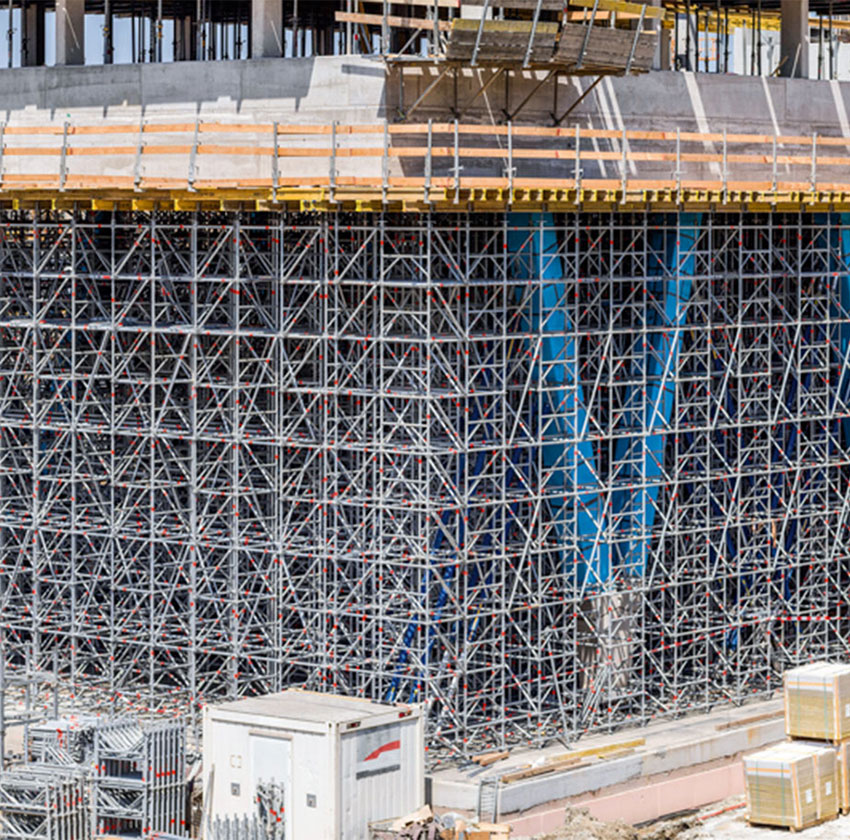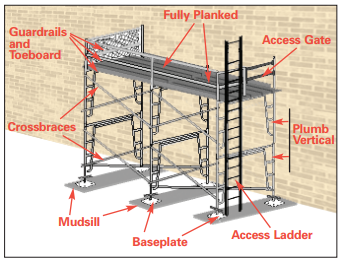Residential Scaffolding Solutions for Safe and Efficient Home Improvements
Checking Out the Different Kinds Of Scaffolding Used in Building And Construction Jobs
The construction sector depends greatly on different kinds of scaffolding to fulfill particular project demands, each offering distinct benefits and applications. Conventional structure scaffolding supplies a durable structure for general jobs, while suspended scaffolding is essential for deal with high-rise frameworks. Other options, such as system and rolling scaffolding, deal with efficiency and movement, specifically. The cantilever alternative proves vital in urban atmospheres where room is constrained. Comprehending the subtleties of these scaffolding types is important for maximizing safety and performance on building and construction sites, triggering a more detailed examination of their distinct features and applications.

Typical Framework Scaffolding
Conventional structure scaffolding is among the most extensively used methods in the building industry as a result of its robustness and convenience. This system contains straight and vertical structures that are set up to create a secure platform for materials and employees. The primary parts include upright messages, straight ledgers, and diagonal dental braces, which together supply a solid structure that can sustain substantial loads.
Among the key advantages of standard structure scaffolding is its flexibility to various building jobs, varying from household structures to large commercial structures. The modular design enables easy assembly and disassembly, making it efficient for both long-lasting and short-term jobs. Furthermore, the system can be personalized in height and width, suiting various building styles and website problems.
Safety and security is paramount in scaffolding applications, and traditional framework systems are equipped with guardrails and toe boards to stop falls and ensure worker protection. Additionally, routine evaluations and adherence to safety policies are essential in preserving the integrity of the scaffold. In general, conventional frame scaffolding continues to be a basic option in the building industry, giving a trusted system for labor and enhancing general job efficiency

Suspended Scaffolding
Put on hold scaffolding provides an one-of-a-kind service for building and construction projects that need accessibility to elevated surfaces, especially in scenarios where conventional structure scaffolding may be unwise. This kind of scaffolding is generally put on hold from the roof or upper degrees of a framework, making use of a system of pulleys, ropes, and platforms to produce a working area that can be gotten used to different elevations.
Among the key advantages of suspended scaffolding is its adaptability. It can be easily repositioned or reduced to fit adjustments in building and construction needs, making it optimal for jobs such as home window setup, frontage job, and upkeep on skyscrapers. Furthermore, the very little impact of put on hold scaffolding enables far better use ground room in city settings, where room is frequently limited.
Security is a crucial factor to consider in the usage of suspended scaffolding. On the whole, put on hold scaffolding supplies a efficient and efficient remedy for accessing hard-to-reach areas in various building and construction circumstances, enhancing both performance and security on site.
System Scaffolding
System scaffolding, typically considered a modern option in the scaffolding industry, contains pre-engineered parts that can be swiftly assembled and adjusted for various building and construction jobs. Scaffolding. This kind of scaffolding is defined by its modular layout, which enables for convenience and effectiveness on job websites, suiting various elevations and structural demands
Usually made from high-strength steel or light weight aluminum, system scaffolding provides improved durability and security. The components include upright blog posts, horizontal ledgers, and angled dental braces, which interconnect safely, making sure a durable framework. The design commonly incorporates standardized fittings, simplifying setting up and disassembly procedures, thereby decreasing labor time and expenses.

Rolling Scaffolding
Rolling scaffolding is a functional option to traditional set scaffolding, developed for mobility and ease of usage on construction websites. This type of scaffolding is composed of a platform sustained by frameworks with wheels, allowing workers to easily move it as required. The wheelchair feature substantially improves performance, as it reduces downtime connected with setting up and disassembling repaired scaffolding.
Normally constructed from lightweight products such as light weight aluminum or steel, rolling scaffolding offers a sturdy yet mobile service for projects needing frequent repositioning - Scaffolding. It is specifically beneficial in jobs such as paint, drywall setup, and electric job, where accessibility to numerous elevations and areas is required
Safety and security is paramount in rolling scaffolding design, with functions such as locking wheels to stop unplanned movement when in use, and guardrails to secure employees from drops. Additionally, numerous designs are flexible in elevation, suiting various project requirements.
Cantilever Scaffolding

The layout of cantilever scaffolding normally includes utilizing arms or brackets secured to a structure or structure, allowing the platform to prolong outward securely. Safety is vital; hence, these scaffolds need to be engineered to withstand various tons and ecological problems. Normal assessment and maintenance are vital to make sure structural stability and employee safety.
Cantilever scaffolding is preferred for its versatility and efficient use of space, making it a popular option in city environments where area restraints prevail. Additionally, it facilitates simpler accessibility to high altitudes, ultimately contributing to the general performance of construction projects. As with all scaffolding types, proper training and adherence to security requirements are essential for employees utilizing cantilever scaffolding.
Conclusion
Typical frame scaffolding offers stability, while suspended scaffolding supplies convenience for elevated tasks. System scaffolding promotes fast assembly, and rolling scaffolding boosts Click This Link wheelchair for varying job atmospheres.
Conventional frame scaffolding gives a durable structure for basic tasks, while put on hold scaffolding is vital for work on skyscraper structures.Moving scaffolding is a versatile choice to conventional set scaffolding, developed for flexibility and simplicity of usage on building websites. As with all scaffolding types, correct training and adherence to safety and security standards are important for workers using cantilever scaffolding.
Standard structure scaffolding offers stability, while suspended scaffolding uses convenience for raised a fantastic read tasks. System scaffolding promotes quick assembly, and rolling scaffolding boosts movement for differing job environments.